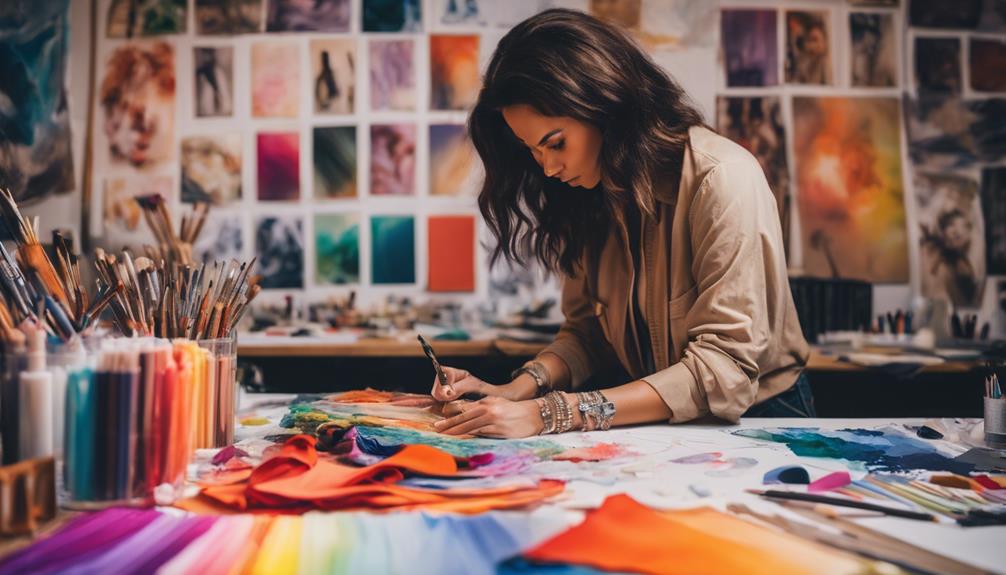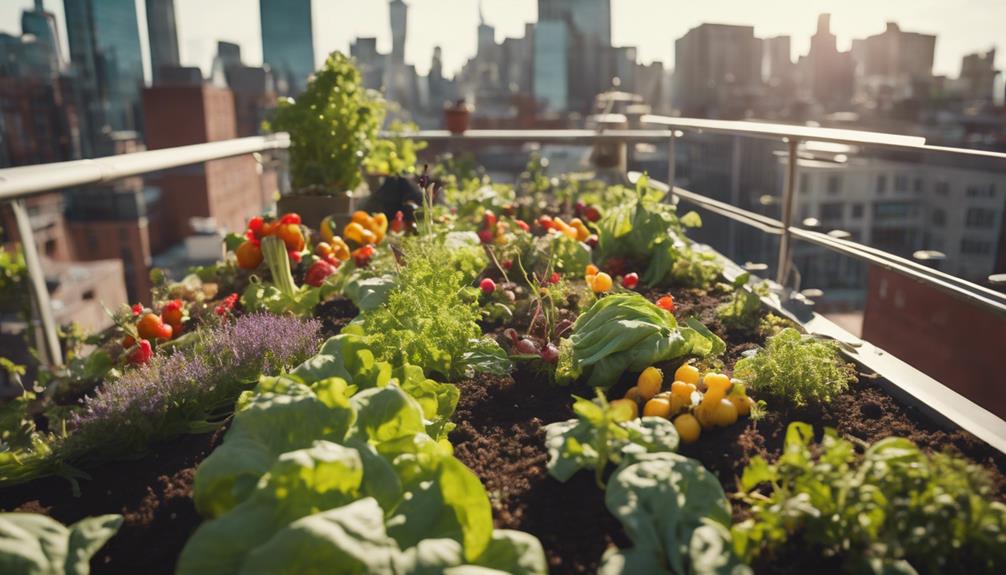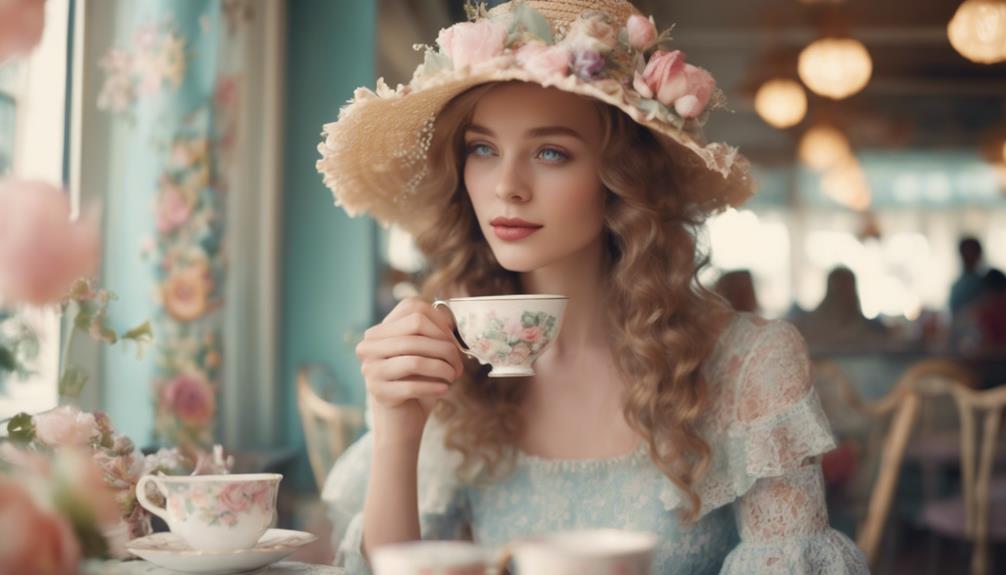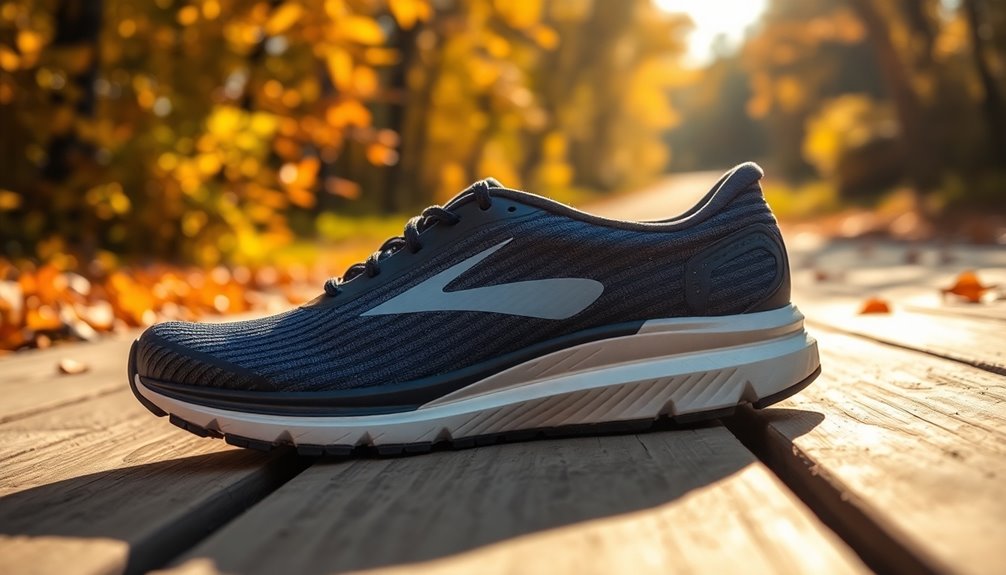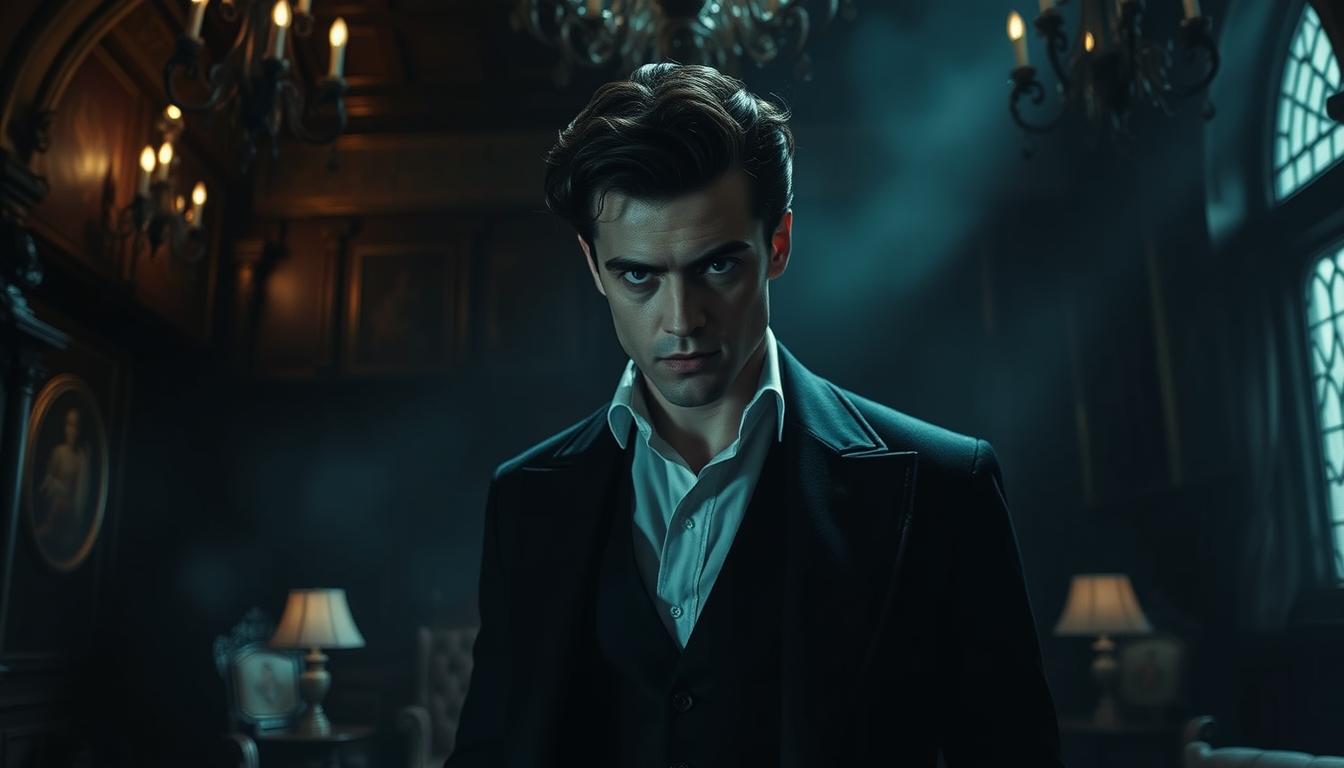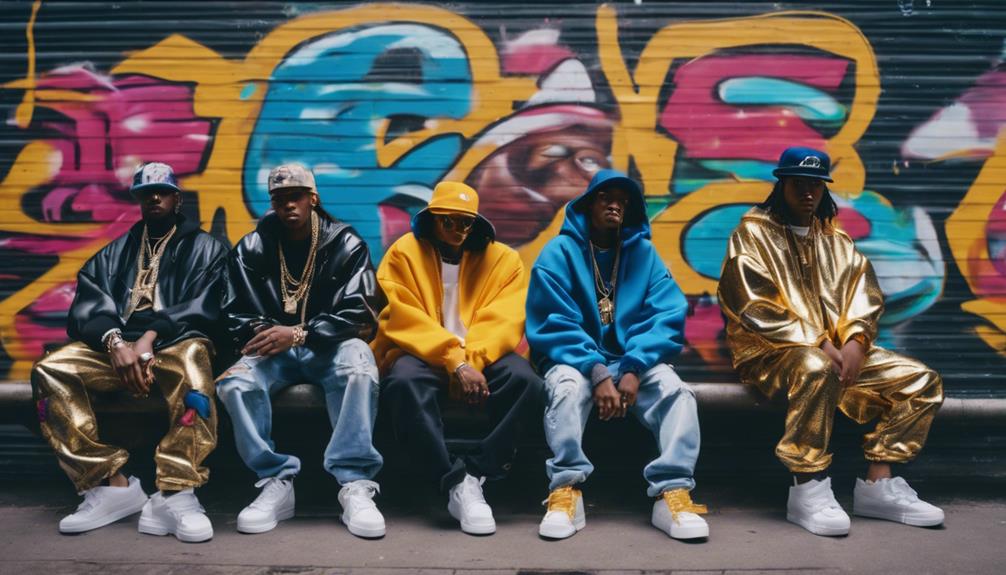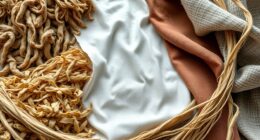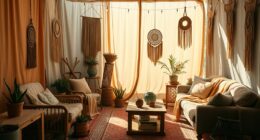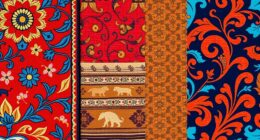Exploring art, fashion, and design jobs immerses you in a dynamic sphere where creativity meets opportunity. With each unique path, you’ll discover roles that range from designing sustainable garments to crafting stunning visual content. You can engage with both traditional craftsmanship and cutting-edge trends, all while expressing your style. Networking is essential in this industry, and understanding the latest trends helps you stand out. From luxury fashion houses to innovative startups, your dream career awaits. Keep uncovering the rich tapestry of possibilities and you’ll find exciting insights that inspire your next step.
Key Takeaways
- Explore diverse roles in fashion such as designer, stylist, or fashion buyer, each offering unique creative opportunities and challenges.
- Stay informed about industry trends and influential figures to enhance your understanding of career paths in art and fashion.
- Networking with professionals and attending events can open doors to internships and job opportunities in the creative fields.
- Consider sustainable practices in fashion as a growing niche, focusing on eco-friendly materials and ethical production methods.
Origin and historical background of the fashion trend/style
To understand the origins of fashion trends, you need to look at how styles have evolved through different historical periods.
Key fashion icons and movements have shaped what we wear today, reflecting cultural shifts and social changes.
Fashion Trend Progression Timeline
The evolution of fashion trends reveals how styles have transformed over centuries, reflecting cultural shifts and technological advancements in textiles. From the draped garments of ancient Egyptians to the structured silhouettes of the Renaissance, each era showcases unique visual elements that highlight societal norms.
As you explore creative careers in fashion, you'll see how designers work to express these changes through their collections.
The 20th century brought significant movements like the Flapper style of the 1920s, which liberated silhouettes and mirrored evolving social attitudes. The bold mod fashion of the 1960s, influenced by counterculture, showcased youthful aesthetics that defined a generation.
In the late 20th century, streetwear emerged, merging casual wear with high fashion and reflecting the vibrant youth culture of the time.
Today, sustainability is a pivotal trend in fashion. Designers incorporate eco-friendly practices and materials, responding to consumer demand for ethical fashion. This shift not only emphasizes creativity but also requires advanced technical skills to innovate responsibly.
As you dive deeper into fashion trends, you'll appreciate how historical context shapes today's creative expression in this dynamic industry.
Fashion Icons and Movements
Fashion icons have shaped movements throughout history, each leaving a lasting impact on style and culture that continues to inspire today.
Iconic designers like Coco Chanel revolutionized women's fashion in the early 20th century, introducing comfortable clothing that changed societal norms.
In the 1960s, the Mod movement emerged, showcasing bold colors and geometric patterns, with British designer Mary Quant popularizing the mini skirt. This shift reflected the rise of youth culture and a desire for individuality.
Fast forward to the 1970s, and you'll find the punk fashion movement, a rebellious statement characterized by leather jackets, ripped jeans, and distinctive hairstyles, heavily influenced by bands like the Sex Pistols.
The 1990s brought the grunge movement, spearheaded by designers like Marc Jacobs, embracing a laid-back aesthetic with flannel shirts and combat boots, epitomizing a countercultural ethos.
As we entered the 2000s, fast fashion transformed the industry, enabling rapid production of trendy clothing at affordable prices. This shift reshaped consumer behavior, leading to a complex dialogue about sustainability in fashion.
Understanding these movements helps you appreciate the evolution of style today.
Key Characteristics
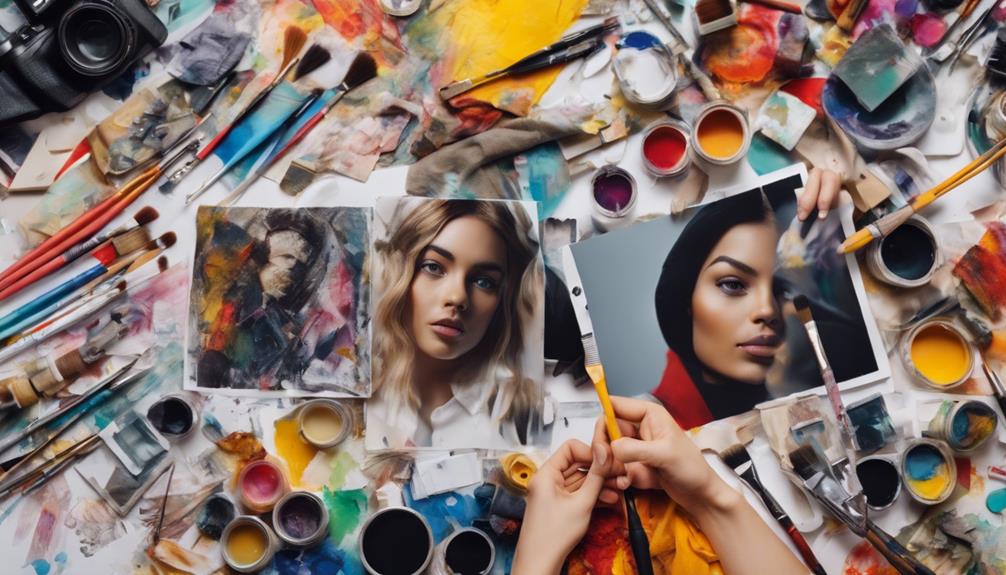
In your creative journey, you'll want to focus on key characteristics that set your work apart.
Signature silhouettes and patterns can define your style, while sustainable fabrics and dyes reflect your commitment to the environment.
Don't forget to incorporate timeless statement accessories that enhance your designs and resonate with your audience.
Signature Silhouettes and Patterns
Signature silhouettes and patterns reveal a designer's unique vision, transforming iconic shapes and motifs into lasting symbols of brand identity. You'll notice that signature silhouettes, like the classic A-line dress or tailored suit, often reflect a designer's aesthetic, becoming recognizable trademarks that resonate with consumers. Patterns play a vital role as well, with recurring motifs such as florals or geometric shapes adding distinctiveness to the collection.
Creating a cohesive collection is essential, as it tells a story that connects with the target audience. This connection enhances brand recognition, making it easier for consumers to identify and remember a designer's work. Bold colors often accompany these signature patterns, elevating the overall appeal and memorability of the designs.
As a designer, experimenting with variations of your signature silhouettes and patterns can keep your work fresh while maintaining a recognizable style. This evolution allows you to attract and retain loyal customers, ensuring your brand continues to thrive in a competitive market.
Sustainable Fabrics and Dyes
Sustainable fabrics and natural dyes are revolutionizing the industry by offering eco-friendly alternatives that minimize environmental impact. You'll find materials like organic cotton, hemp, and Tencel made from renewable resources, which considerably reduce waste compared to conventional textiles. These sustainable fabrics are designed to be biodegradable, ensuring they won't linger in landfills for decades.
When you choose natural dyes derived from plants, minerals, and insects, you're opting for a non-toxic, biodegradable option that's kinder to the planet. Plus, the production processes for sustainable fabrics often use up to 90% less water and energy, making them a smart choice for the environment.
Certifications like the Global Organic Textile Standard (GOTS) and OEKO-TEX® help you identify materials that meet strict environmental and social criteria throughout their production. By incorporating these sustainable fabrics and dyes into your wardrobe, you support a circular economy, where resources are reused and recycled, reducing overall waste.
Embracing these eco-friendly options not only contributes to a healthier planet but also sets a standard for future generations in fashion and design.
Timeless Statement Accessories
Timeless statement accessories blend classic designs with high-quality materials, ensuring they remain versatile and relevant across seasons.
These timeless accessories often showcase artisanal craftsmanship, making them durable and appealing. You'll want to invest in iconic items like a classic pearl necklace or a structured handbag, as these pieces can be cherished and passed down through generations, highlighting their lasting value.
When choosing statement accessories, look for those that incorporate bold colors or distinctive shapes. These unique elements serve as focal points in your outfits while maintaining their timelessness.
Additionally, the rising demand for sustainable and ethically produced accessories means you should consider pieces that reflect responsible sourcing practices.
Modern Interpretation
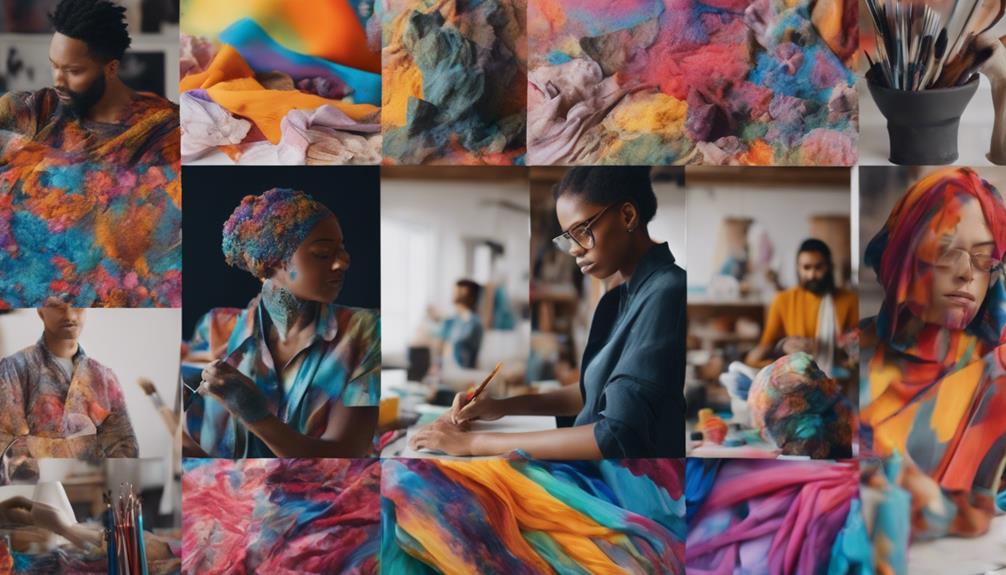
Modern interpretation in fashion reflects how streetwear and athleisure styles blend with luxury fashion houses.
You see this shift in the bold choices of fashion-forward public figures who redefine what's trendy.
Streetwear and Athleisure Styles
Streetwear and athleisure styles have transformed the fashion landscape, merging comfort and urban aesthetics to create looks that resonate with today's culture.
You'll notice how streetwear embodies elements of urban culture, often featuring bold graphics and graffiti art. Brands like Supreme and Off-White are at the forefront of this movement, shaping contemporary fashion trends that appeal to younger consumers.
Athleisure, on the other hand, emphasizes functionality and performance. It's all about advanced fabric technologies that enhance comfort for both athletic and everyday wear, making it a versatile choice for many.
As you explore creative careers in fashion, consider how these styles have opened doors for fashion designers to experiment and innovate.
Collaborations between high-fashion designers and streetwear brands have blurred the lines between luxury and casual wear, creating a unique fusion that resonates with fashion-forward consumers.
This trend not only showcases the evolving nature of fashion but also highlights the growing demand for comfortable, stylish clothing.
Whether you're interested in designing or marketing, the intersection of streetwear and athleisure offers exciting opportunities for anyone looking to make their mark in the industry.
Luxury Fashion Houses
Luxury fashion houses continue to redefine elegance and exclusivity, blending traditional craftsmanship with contemporary trends to captivate today's discerning consumers. As you explore career paths within these prestigious brands, you'll find opportunities for fashion designers, buyers, stylists, and merchandisers, all crucial to maintaining the brand's market presence.
In this industry, the average salary for key roles, like fashion designers and art directors, can range from $70,000 to over $100,000 annually, reflecting the high demand for skilled creative professionals. As you navigate your career, remember that networking is essential. Building relationships within luxury fashion circles can open doors to collaborations and job opportunities that may not be publicly advertised.
Sustainability is also a growing focus in luxury fashion houses. Many brands are prioritizing ethical practices and transparency in their artistic productions, appealing to consumers who value responsible sourcing. As you consider your future in this dynamic field, keep in mind the importance of aligning with brands that share your values and vision for a sustainable fashion industry.
Fashion-Forward Public Figures
Fashion-forward public figures are reshaping the industry by using their unique styles to influence trends and connect with fans on a global scale. Celebrities like Rihanna and Harry Styles don't just wear fashion; they create it. With social media platforms at their fingertips, they showcase their bold fashion choices, allowing them to drive trends that resonate worldwide.
Many of these public figures collaborate with renowned designers or launch their own brands, like Kanye West's Yeezy, which has become a streetwear phenomenon. This collaboration not only elevates their personal brands but also fosters innovation within the fashion industry.
Moreover, the intersection of fashion and sustainability is gaining traction. Public figures increasingly use their platforms to advocate for ethical fashion practices, shaping consumer values and pushing brands to adopt more sustainable methods. Events like the Met Gala serve as a creative stage for these influencers, amplifying their statements while also spotlighting emerging designers.
As these public figures continue to redefine fashion, they inspire countless individuals to embrace their own creativity, making the industry more dynamic and inclusive than ever before.
Styling Tips
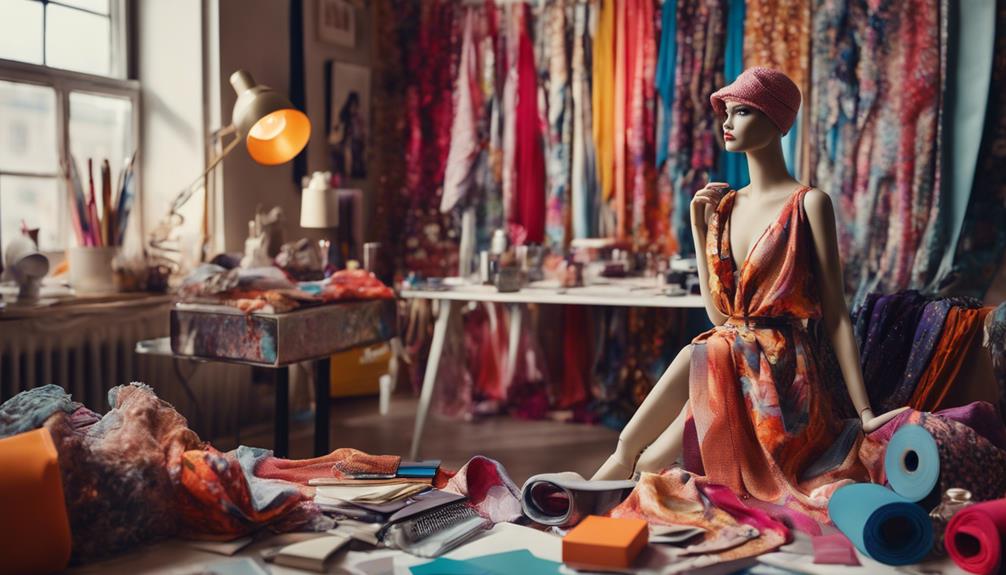
When it comes to styling, a versatile neutral color palette can serve as your foundation, allowing for easy mixing and matching.
Layering with statement pieces not only adds interest but also lets your personality shine through.
Don't shy away from combining patterns and textures; it can transform an outfit from ordinary to extraordinary in no time.
Versatile Neutral Color Palette
A versatile neutral color palette can transform your wardrobe, offering endless possibilities for mixing and matching outfits throughout the year. Neutral colors like beige, gray, and white serve as a blank canvas, letting your creative skills shine through with bold accessories or statement pieces. This adaptability is essential for anyone considering art jobs or pursuing careers as fashion designers, where a well-rounded understanding of design is important.
To create a visually appealing look, incorporate various textures such as linen, leather, and wool in your neutral palette. This adds depth and interest while maintaining a cohesive aesthetic. As you style outfits, pay attention to the color temperature—warm or cool—to harmonize with your skin tone, enhancing your overall appearance.
Embracing a neutral color palette isn't just fashionable; it's practical, allowing seamless shifts from day to night. For busy lifestyles, investing in versatile pieces is one of the key skills needed to master modern fashion. By focusing on these strategies, you'll cultivate a polished wardrobe that reflects the creativity of your mind and showcases your unique style.
Layering With Statement Pieces
Layering with statement pieces can instantly elevate your outfit, adding personality and flair that showcases your unique style. Statement pieces—like bold jewelry or oversized outerwear—serve as focal points, drawing attention and enhancing your overall look. When you think about layering, consider how each piece interacts with the others to create visual interest.
For instance, pairing a chunky necklace with a simple top maintains a harmonious silhouette while allowing for creativity in your outfit. You can also experiment with accessorizing. A vibrant handbag or a striking hat can transform a basic look into something stylish and eye-catching.
To achieve the best results, be mindful of proportions; balancing statement pieces with more understated garments will keep your look cohesive. Additionally, layering different textures can add depth to your ensemble. Think about combining a printed scarf with a structured blazer for a sophisticated touch.
Ultimately, layering with statement pieces is all about expressing your personal style and turning everyday outfits into fashion statements that reflect who you are. Embrace your creativity, and don't be afraid to showcase your individuality through your unique combination of statement pieces!
Combining Patterns and Textures
Combining patterns and textures can transform your outfit into a visual masterpiece, showcasing your creativity and personal style. To achieve visual harmony, pair bold prints with more subdued textures. This balance allows each element to shine without overwhelming the viewer.
Start by selecting a cohesive color palette that includes complementary shades, enhancing the overall aesthetic of your outfit. When layering textures, consider mixing denim with silk or leather with lace; these combinations add depth and make your look visually appealing.
Be mindful of scale when combining patterns. Mixing large prints with smaller ones creates a dynamic effect that keeps the eye engaged. To further experiment, use accessories like scarves or belts to introduce additional patterns or textures. These elements can tie your outfit together while allowing room for creativity.
Shopping Guide
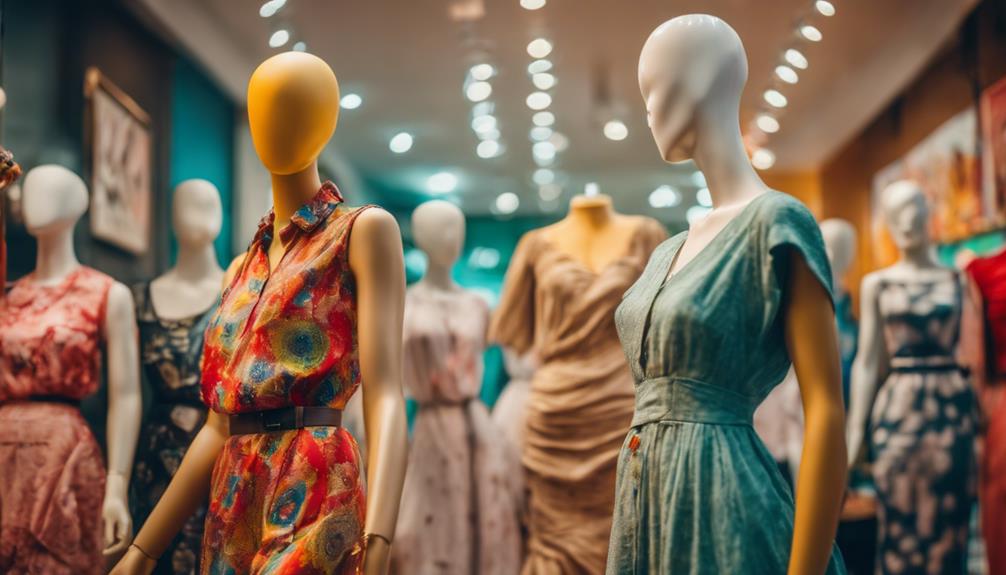
Discovering the right pieces for your wardrobe can elevate your style and boost your confidence in the fashion world. As a creative individual, you'll want to stay informed about fashion designers, as they often launch their collections based on current market trends. To succeed as a Fashion Buyer, understanding these trends is essential for making informed purchasing decisions.
Start by exploring local boutiques and online platforms that showcase emerging designers. This hands-on experience won't only refine your taste but also help you identify unique pieces that resonate with your style.
Don't forget to utilize your networking skills; connecting with industry professionals can lead to valuable insights and opportunities.
Consider following resources like Vogue and The Business of Fashion to stay updated on the latest trends and industry news. These platforms often feature interviews with influential designers and buyers that can inspire your wardrobe choices.
Upcycling Vintage Clothing Techniques

Upcycling vintage clothing lets you transform old pieces into something fresh and trendy.
You can explore techniques like repurposing garments or adding personalized embellishments to make each item unique.
This creative process not only showcases your style but also supports sustainable fashion practices.
Repurposing Old Clothing Techniques
Transforming old clothing into stylish new pieces not only showcases creativity but also promotes sustainability in the fashion industry. Upcycling vintage clothing techniques breathe new life into outdated garments, allowing you to craft unique clothing styles that reflect your personality. As you explore this eco-friendly fashion movement, you'll find that many fashion designers now prioritize sustainability, creating collections that elevate recycled materials.
By learning upcycling techniques, you can save money while minimizing your carbon footprint. It's a win-win! You'll discover various methods—like dyeing, patching, and adding embellishments—to enhance the aesthetic appeal of your wardrobe. These practices not only make your pieces stand out but also tell a story of transformation.
If you're enthusiastic to immerse yourself in this creative endeavor, numerous workshops and online tutorials are available. These resources can help you master the art of upcycling vintage clothing, fostering your creativity while connecting you with a community of like-minded individuals.
Personalized Embellishment Techniques
Enhancing vintage garments with personalized embellishments allows you to showcase your individual style while giving new life to older pieces. Upcycling techniques are a fantastic way to promote sustainability in fashion and reduce waste. You can creatively transform outdated clothing using various methods that breathe fresh air into their designs.
Start by adding embellishments like patches, embroidery, or fabric paint. These not only enhance the original design but also make the garment uniquely yours. Techniques like dyeing or distressing can change the color or texture, ensuring your vintage piece feels trendy and modern.
Incorporate elements such as lace, buttons, or beads to further personalize your creations. This approach enables you to express your unique style while honoring the garment's history.
Plus, the DIY culture surrounding upcycling encourages you to explore your creativity and share your techniques with others.
Cultural Impact
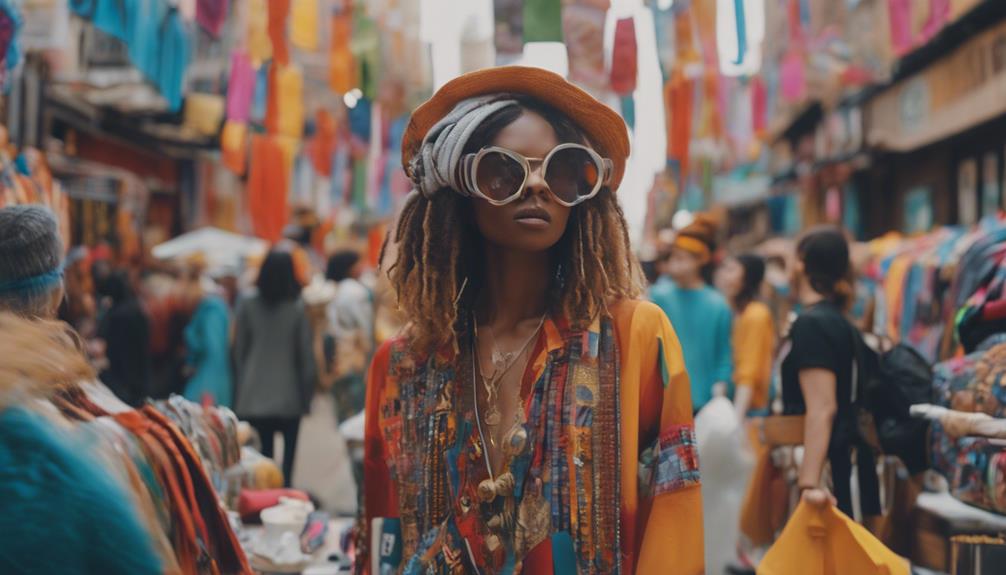
Fashion in music videos often sets trends that resonate across cultures, showcasing the power of visuals in shaping societal norms.
You can see how fashion intersects with activism, as designers use their platforms to address social issues and inspire change.
Fashion in Music Videos
In music videos, clothing choices often set the tone for cultural trends, making a lasting impact on how we perceive style today. You'll notice that iconic ensembles not only enhance visual storytelling but also elevate artists' brand recognition. Collaborations between musicians and fashion designers create memorable looks that resonate with audiences, often influencing mainstream fashion choices.
By showcasing innovative fashion concepts, music videos provide a unique platform for designers to experiment with bold designs that mightn't appear in traditional fashion shows. This exposure can greatly boost a designer's visibility and sales, as viewers are enthusiastic to emulate the styles they see in their favorite videos.
Moreover, the interplay between music and fashion extends into social media trends, with fans sharing and replicating looks, further merging these two creative fields. If you're considering creative career paths, think about the dynamic relationship between fashion and music videos.
The impact of these visuals shapes not only cultural trends but also opens doors for collaboration and innovation in the fashion industry. Embrace the possibilities that lie at this unique intersection!
Fashion and Activism Intersections
The growing trend of fashion activism is reshaping the industry by empowering designers to tackle social issues and advocate for change.
You'll find that this movement emphasizes ethical practices and sustainable fashion, pushing brands to adopt transparency in their supply chains. Initiatives like the Fashion Revolution encourage you to question where your clothes come from and how they're made, promoting a more informed consumer base.
As you explore fashion's intersection with activism, you'll notice a significant focus on inclusivity and diversity. More brands are showcasing models of various sizes, ethnicities, and backgrounds, reflecting the societal changes we're witnessing. This shift isn't just aesthetic; it's a response to consumer values that prioritize representation.
Collaborations between designers and social causes are also on the rise, creating collections that raise awareness about pressing issues like climate change and gender equality.
You'll see that younger generations are especially drawn to brands that align with their values, driving the industry to embrace activism as a core component of their business strategies. Engaging with fashion activism means you're not just part of a trend; you're contributing to meaningful change.
Frequently Asked Questions
What Careers Can You Do With Art and Design?
You can pursue various careers with art and design, including graphic design, UX/UI design, multimedia artistry, teaching, or curating. Each path offers unique opportunities, allowing you to express creativity while building a sustainable career.
What Jobs Can You Get With Creative Arts?
You can explore various jobs in creative arts, including graphic design, UX/UI design, teaching, curating, and writing. Developing your skills and networking can greatly enhance your opportunities and earning potential in these diverse fields.
What Are 5 Careers You Could Pursue as They Pertain to Art?
If you're considering careers related to art, you could explore being a 3D animator, graphic designer, illustrator, art educator, or photographer. Each path offers unique opportunities to express your creativity and earn a competitive salary.
What Career Path Is Art In?
Art careers often blend creativity with various industries, allowing you to explore roles like teaching, curating, or digital design. You'll need to continuously develop skills, network, and adapt to market trends for success.
How Can I Pursue a Career in Fashion or Design within the 2000s Hip Hop Fashion Industry?
If you’re looking to pursue a career in fashion or design within the iconic 2000s hip hop fashion industry, it’s important to stay updated on current trends while also paying homage to the influential styles of the past. Networking within the hip hop community and staying true to your own unique aesthetic can help you make a name for yourself in this vibrant and trendsetting industry.
Conclusion
As you explore the vibrant world of art, fashion, and design, remember that these creative careers are all about self-expression and innovation.
Embrace the unique characteristics of your chosen style, and don't be afraid to reinterpret modern trends in your own way.
With a bit of creativity, you can elevate your wardrobe through upcycling and conscious shopping.
So go ahead, immerse yourself in these exciting paths, and let your passion for creativity shine!
